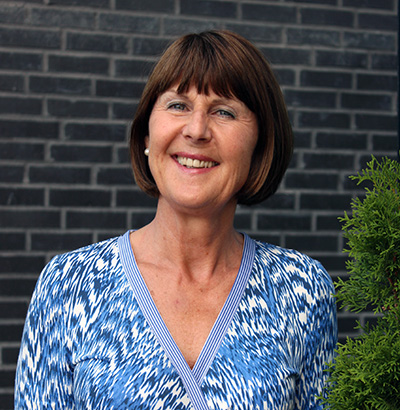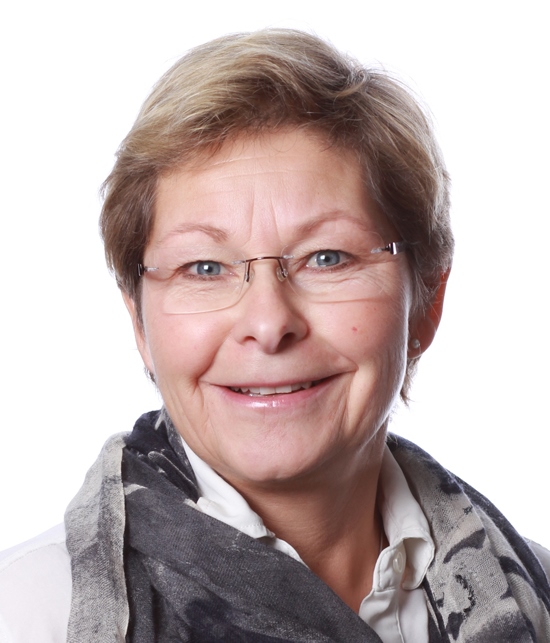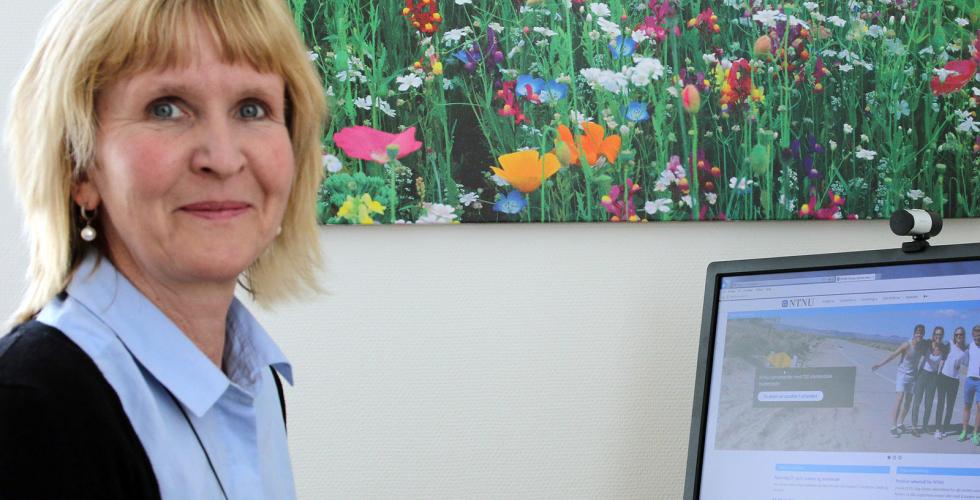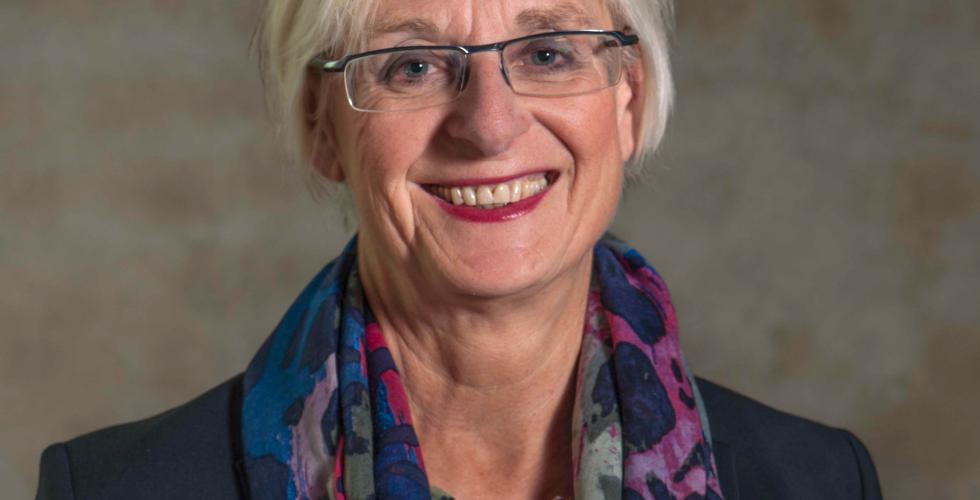New equality tool for mergers
Is the institute where you work going to be restructured or will the entire university college be merged with another institution? The KIF Committee has now prepared a guide with advice on how you can work with gender and diversity during restructuring processes.

A number of universities and university colleges were merged on 1 January 2016, and the government has approved new mergers to take place on 1 January 2017. The government’s goal for the mergers is to strengthen the institutions and enhance their quality.
The KIF Committee has prepared a guide to give university colleges and universities practical tools to use in their restructuring efforts and to remind them to keep gender balance and diversity foremost in their minds. The guide is a follow-up of the conference Structural reform in the higher education sector: Promising for gender equality?, which was organized by the Norwegian University of Science and Technology (NTNU) and the KIF Committee in June 2016.
The guide is now available here in Norwegian: Restructuring in the research sector – a guide for enhancing gender equality and diversity. (An English translation of the guide is coming soon.)
State Secretary Bjørn Haugstad from the Ministry of Education and Research recognizes the value of KIF’s initiative – and appreciates the results.
“It’s very useful that the KIF Committee has developed specific advice for leaders in such key areas of research policy. The guide seems very informative, and I’m looking forward to getting feedback from both the sector and the committee on how it’s working,” says Haugstad.
“I see that NTNU’s rector, Gunnar Bovim, has gone ahead and already done what the KIF Committee recommends in the guide: namely, to include competency in gender equality as a requirement for all management positions when job vacancies are posted. I hope that more institutions will be inspired by the guide and follow in Bovim’s footsteps,” he says.
Opportunity to achieve gender balance here and now
“KIF is concerned that restructuring entails an opportunity to increase gender equality. We are encouraging the merged institutions to build a new structure and culture that promotes gender equality and diversity in a better way. The guide is the committee’s contribution to explaining how this can be done,” says Heidi Holt Zachariassen in the KIF Committee’s secretariat.

“We know that not all managers automatically think about gender balance and gender equality in their daily activities, and in periods of restructuring the focus can easily shift to completely different issues. Managers may think that gender equality will have to wait until the next phase. They may also lack knowledge about this kind of change-promoting work. The guide will be a reminder that gender equality must be addressed here and now. If you build a new organization with uneven gender distribution in senior-level positions, the inequalities will continue,” says Ingrid Guldvik, who is the deputy chair of the KIF Committee and a dean and professor at Lillehammer University College.
According to Guldvik, the guide is important because it provides knowledge and practical advice to managers at various levels.
“At the same time, employees who aren’t in leadership positions now have a useful tool they can show to their managers. In this way more people can use the guide to promote gender balance efforts within their own organization,” she says.
Good solutions during major restructuring
Rectors agree with the KIF Committee that gender equality efforts must not be sacrificed, even though the institutions are dealing with major restructuring processes. This issue was addressed in our article earlier this year.
Read: Rectors do not want gender equality put on hold
The guide includes “10 tips for the restructuring phase” and advice on how gender equality can be integrated into large organizations. The guide presents specific advice and good examples, and it contains the committee’s arguments for why gender balance and ethnic diversity are important, and why mergers and restructuring processes in particular create an opportunity for change.
The idea is that the guide will be a practical tool in gender equality efforts, as well as easy to use and easy to look up information in.
The gender equality adviser at NTNU, Svandis Benediktsdottir, believes that the guide offers good solutions that can be used in future restructuring and merger processes.
“There is definitely a need for this type of publication. Gender equality doesn’t happen on its own. The leadership has a job to do in the future, and the guide can be a useful tool as institutions prepare for upcoming mergers,” says Benediktsdottir.
Kathrine Skretting, Rector of Lillehammer University College (HiL), agrees with Benediktsdottir.
“We need concrete recommendations and good ideas, and it’s excellent that the KIF Committee is taking responsibility to establish ‘best practice’ in this area,” says Skretting.
What does restructuring do to gender equality?

Benediktsdottir thinks it is critical that both genders take part in developing the new organization.
“Processes like these often happen very quickly, and if restructuring is carried out largely without including women’s qualifications, experiences and expertise from the outset, we will get an unnecessarily poor result,” she says.
“Is it especially during mergers and restructuring that you need support to keep gender equality work going strong or do you also need support during ordinary work days at the institution?” we asked the rector of HiL.
“Yes to both. In some respects it’s well integrated, while at the same time there’s a need for a reminder. Gender balance and diversity are different in some ways. While we have worked with gender balance for many years – but which nonetheless can slip in specific cases – it can be difficult to achieve ethnic and international diversity in some circumstances. For example, this may be because Norwegian is the daily language of teaching and meetings. Tolerance and openness are values that have a foothold in academia, but we must be aware in our daily defence of them,” says Kathrine Skretting.
“Gender balance and diversity are not addressed on a daily basis. This is why we were so enthusiastic about the measure that Ingrid Guldvik has also praised: including competency in gender equality as a requirement in new job announcements. Practical tips like these are very useful for managers, especially during restructuring,” she says.
Read: New demands on managers
“We want to strengthen gender equality efforts”
“Restructuring processes in general, and merger processes in particular, require us to keep an especially watchful eye on issues related to gender balance, equality and diversity,” says Anna L. Ottosen, Rector of Hedmark University College.

“We need a more systematic effort to ensure gender equality and diversity in the research sector, and there must be an active effort to increase the percentage of women. Since there are many factors and perspectives to take into account in a restructuring process, the institution must have expertise and be especially aware of gender equality and diversity in processes like these,” she says.
According to Ottosen, Hedmark University College has been working systematically with gender equality and diversity for a long time.
“But even though we work with gender equality, we need an ongoing effort and new measures, and we need reminders,” says Ottosen.
“Are gender balance and diversity being addressed in the restructuring process at Hedmark University College?”
“Yes they are, when we discuss competency requirements and appoint project groups and committees, or take other specific action. But we are facing a major restructuring, namely a merger with Lillehammer University College, and it will be especially important to emphasize these areas in the new institution.”
“The guide will also serve as a reminder and a guidepost for everyone working with the restructuring,” says Ottosen.
The University College of Southeast Norway (HSN) is among the newly merged institutions.
“We think it’s an excellent idea. We need a guide like this to strengthen equality efforts both during restructuring processes and in general,” says Elisabeth E. Borhaug, Director of Personnel and Organization at HSN.
Borhaug explains that the gender equality and inclusion committee at HSN is meant to be a driving force for equality within the organization. During the restructuring the committee at the former Telemark University College invited the merger’s project leader to a meeting to focus on gender balance at the new institution.
Think it, want it, do it
Although the senior-level management at many institutions is concerned about gender equality, we have seen several examples of the opposite in practice. When NTNU commissioned the Nordic Institute for Studies in Innovation, Research and Education (NIFU) to evaluate its own merger process, NTNU failed to put gender and diversity on the list of factors to be evaluated.
Read: Disappointed about NTNU’s lack of gender perspectives

Rector Petter Aasen of the new University College of Southeast Norway (HSN) thinks that gender equality perspectives should guide the direction of the planning efforts, a viewpoint which Aasen stated to kifinfo one year ago.
Read: Ombudsman will ensure gender equality
However, an article in the independent online newspaper Khrono revealed that HSN’s senior-level management has become very gender imbalanced, with nine men and two women.
To address this, the Director of Personnel and Organization says that HSN has launched several projects:
“We are working systematically to increase the percentage of women in top academic positions and research management through the KLOK project and the associate professor programme,” says Borhaug.
The students have a positive view
Marianne Andenæs, head of the National Union of Students in Norway (NSO), is concerned that the percentage of female researchers does not correspond to the percentage of women in higher education, and she thinks a guide may be a good way to bring attention to the measures needed to ensure better gender equality and diversity.
“Of course NSO thinks the work with gender equality among researchers is positive, and there is clearly a need for measures. We think there needs to be a cultural change, especially with regard to recruitment processes. Unfortunately it’s well documented that people look for others like themselves when recruiting to fill a position,” says Andenæs.
Is the guide too late to make a difference?
NTNU has already become a new organization, and its gender equality adviser, Benediktsdottir, is unsure how NTNU can make use of the guide in the best possible way.
“For NTNU it’s a little bit like getting the tool chest after the new organization has been assembled. But I expect that the guide can give us new ideas about future efforts, especially when it comes to our hiring policy. Even though we have a new organizational chart, this doesn’t necessarily mean that we have finished assembling our staff, and it is here where the brochure will certainly be useful. Coordination and sharing of experiences and expertise are important for all departments.”
Heidi Holt Zachariassen of the KIF Committee’s secretariat is well aware that the guide is coming out too late for some institutions.
“Of course the KIF Committee wishes it could have published the guide last year. By the same token, we believe the sector is continually changing, so we assume the guide will be relevant for a long time. A guide like this can be used in each restructuring process – it can be good to have something in your back pocket that tells you what to look for and how you can change course towards more gender equality,” says Zachariassen.
“Right now the sector is undergoing major restructuring. We think the guide can help to create a more gender-balanced higher education sector,” says Ingrid Guldvik, the deputy chair of the KIF Committee.
Translated by Connie Stultz.
Kilden genderresearch.no has prepared the guide Restructuring in the research sector – a guide for gender equality and diversity on commission from the KIF Committee. The guide was written by Anne Winsnes Rødland of Kilden genderresearch.no in cooperation with Mari Lilleslåtten of Kilden and Heidi Holt Zachariassen and Ella Ghosh of the KIF secretariat.
The guide may be downloaded from kifinfo.no. A printed version may be ordered from the KIF secretariat.
Contact the KIF secretariat to order a printed copy of the guide.
(An English translation of the guide is coming soon.)





